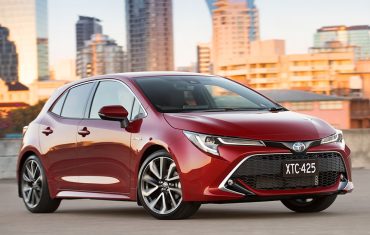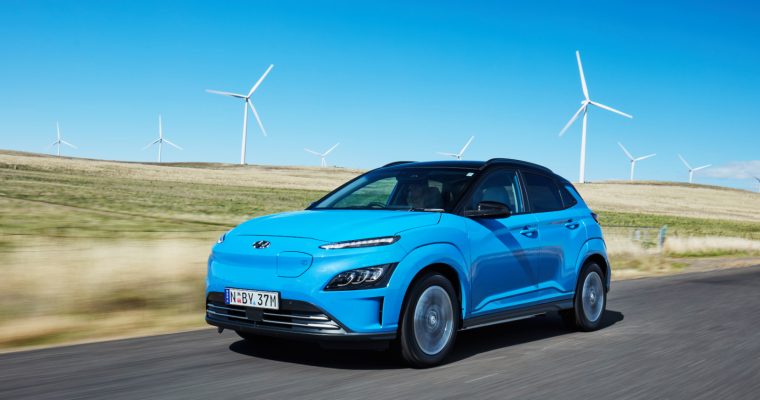
The cars that can save you thousands
For driversNobody likes the tax man.
But that may change when leasing an electric vehicle as your next car with SG Fleet.
The Federal Government’s Electric Vehicle Discount bill eliminates the payment of Fringe Benefits Tax for zero and low-emission vehicles, which makes leasing an electric vehicle more attractive than ever before.
Fringe Benefits Tax is a tax paid on any benefits an employer provides to employees beyond salaries and superannuation, including vehicles. It is calculated on what is termed the ‘gross-up’ value of the benefit provided, which, regarding vehicles, can equate to thousands of dollars per year.
In a salary packaged novated lease, the FBT is paid by the employee. Where a company car is provided to an employee, the FBT is paid by the employer.
By eliminating the payment of FBT on zero and low-emission vehicles, the Electric Vehicle Discount bill could accelerate the take-up of EVs and make them cheaper to run as lease vehicles, building on the fact they already offer lower overall running costs than conventional cars with an internal combustion engine.
But the Electric Vehicle Discount bill doesn’t apply to all green cars. It is only available to fully electric, plug-in hybrid and hydrogen fuel cell vehicles with a first retail sale value below the luxury car tax threshold for fuel efficient vehicles, which currently stands at $84,916.
So, let’s look at what vehicles are applicable in each of the primary segments of the Australian automotive market to help you find an EV that suits you.
Small Cars
There is a raft of small, fully electric vehicles available in Australian showrooms now that qualify for the FBT exemption.
Because of their size, they have small battery packs and limited driving range, and are best suited as lightly run urban commuters. But they are also among the most accessible, starting with the GWM Ora, which is the cheapest electric vehicle currently on-sale in Australia with a starting price of $45,550 driveaway.
The cutesy little Chinese-built hatchback comes with a seven-year warranty, a long list of advanced safety features, and a five-start ANCAP safety rating. You can choose either a 48kWh battery (in Standard Range) or a 64kWh battery (in Long Range models) that offer 310km and 420km driving range respectively.

If you need a vehicle that is slightly larger, the Nissan Leaf may be better suited. With a starting price of $50,990 (plus on-roads), the standard Leaf has a 39kWh battery and can travel up to 270km on a single charge. But there is also the option of the Leaf+ with a larger 59kWh battery that extends the driving range to 385km.

For around the same price, you can also choose from a trio of trendy European models; the Fiat 500e, the soon-to-be-superseded Mini Cooper SE hatch or the new Cupra Born.
Both the Fiat and Mini offer a futuristic twist on retro-inspired classics, with the 500e, which will cost from $52,500 when it lands in local showrooms from the middle of the year, has a 42kWh battery with 311km of driving range, while the Mini, which costs from $55,650, is ultimately sportier in its driving character with more power but offers less range (233km).
Cupra is one of the newest brands to land in Australia and falls under the umbrella of the Volkswagen Group. The Born hatchback is the company’s first dedicated electric vehicle and uses the VW Group’s dedicated EV platform with a 77kWh battery, a rear-mounted 170kW/310Nm electric motor and 511km of driving range. It costs from $59,990, but stock is limited.
Lastly, the Mercedes-Benz EQA 250 in basic form (without any options) falls just under the LCT threshold. Costing from $81,700 (plus on-roads), it has a 140kW/375Nm electric motor, a 66.5kWh battery and 330km of driving range.
Mid-size cars
If you need a larger vehicle and long-range capability, there are a handful of options that apply to the FBT exemption, including Australia’s most popular electric vehicle, the Tesla Model 3.
However, only two of the three variants offered locally fall under the LCT threshold; the entry-level RWD – with a single motor and 491km of range that costs from $64,300 (plus on-roads) – and mid-tier Model 3 Long Range with a larger battery, dual motor configuration and up to 602km of range.
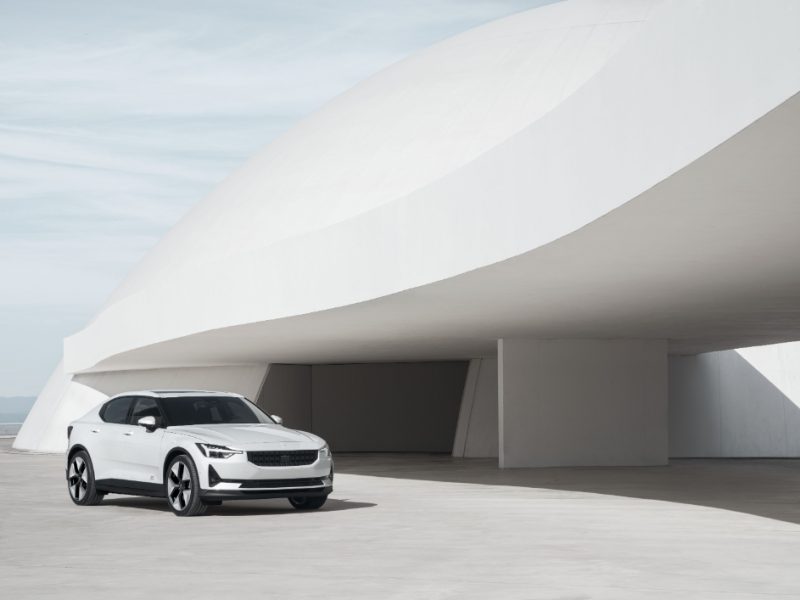
Alternatives to the Tesla include the Polestar 2 and all-new Hyundai Ioniq 6. The former is offered in three model variants that all fall under the LCT threshold, with prices starting at $63,900 for the Standard Range Single Motor with 478km of range and rising through the Long Range Single Motor ($68,400, 551km range) and Dual Motor Long Range ($73,400, 487km).
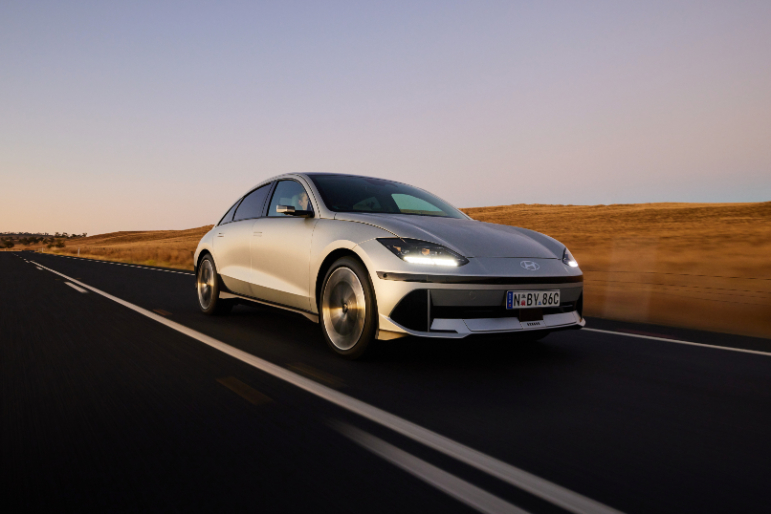
With the streamlined Hyundai Ioniq 6, on the other hand, only the base-level Dynamiq RWD ($74,000 with a single 168kW motor and 612km of range) and mid-grade Techniq AWD ($83,500 with dual motors and 519km of range) fall under the LCT threshold.
The Peugeot 508 Fastback Plug-In is the only hybrid mid-sized sedan applicable to the FBT exemption. The sleek four-door, which costs $81,610 (plus on-roads), pairs a 1.6-litre turbo petrol four-cylinder with an 81kW electric motor and an 11.5kWh battery. It can drive on battery power alone for up to 55km.
Small SUV
There are plenty more options to choose from if you consider an SUV.
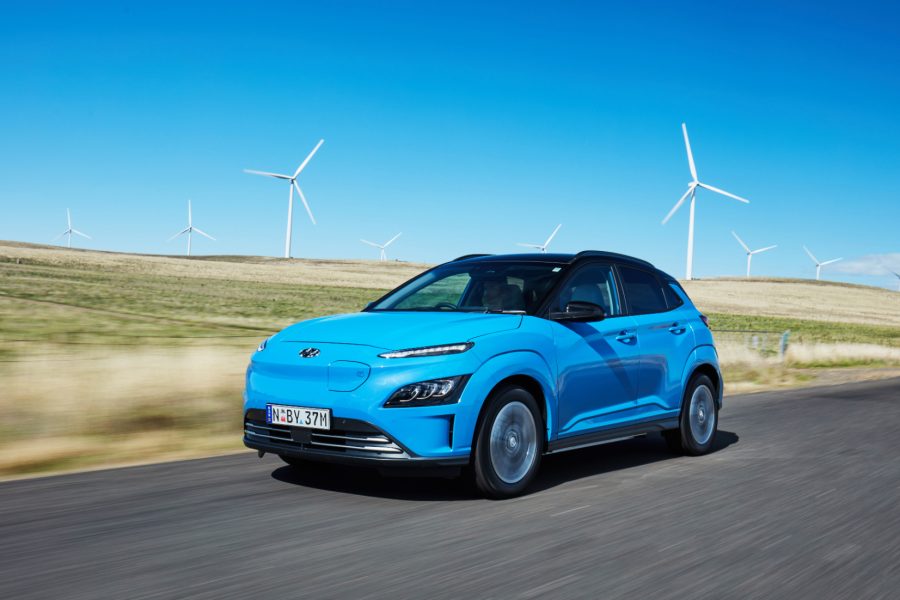
Among the compact segment, the Hyundai Kona Electric has been around for almost an entire generation and offers a great blend of practicality and performance. The current model is offered in both Standard (39.2kWh and 305km) and Extended Range (64kWh and 557km) models with a starting price of $58,000.
But it is about to be replaced by an all-new generation that is due to arrive in showrooms from the middle of the year, which is expected to follow suit with two powertrain configurations that offer similar performance and driving range.
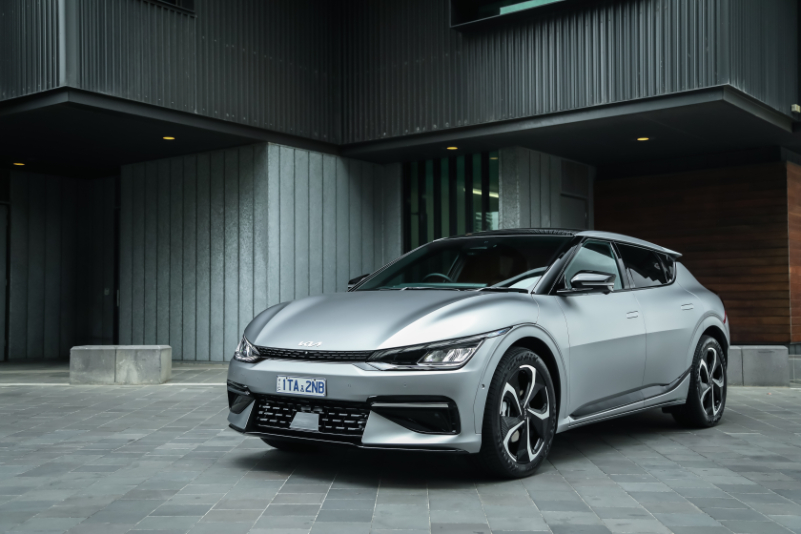
Using the same basic underpinnings, the Kia Niro EV is already on-sale in Australia and offered in two model grades – S and GT-Line. Both feature a 150kW electric motor and a 64.8kWh battery that provides 460km of driving range. The Niro EV costs from $64,450 plus on-roads).
The most affordable option – and one of the cheapest electric cars in Australia – is the MG ZS EV, which starts at $44,490 driveaway for the base-model Excite which has a 51.1kWh battery and offers 320km of driving range. The mid-level Essence has the same powertrain while the Chinese-owned brand recently introduced a range-topping Long Range with a larger 72.6kWh battery that is good for 440km.
Peugeot has confirmed it will add the e-2008 small SUV to its local line-up later this year. Powered by a 100kW electric motor and a 50kWh battery, it offers up to 400km of driving range and should be priced around $65,000 when it arrives.
Far less convincing is Mazda’s first ever electric vehicle, the MX-30 Astina Electric. It costs more ($65,610 plus on-roads), is physically smaller, has a less powerful 107kW electric motor and only offers a driving range of 223km from its 35.5 kWh battery.
For a little more, you can choose any of the four models in the Volvo XC40 Recharge and C40 Recharge range. The former is a more conventional small wagon while the latter has a coupe-like body style. Both are offered in Pure Electric (170kW single motor) and Twin Pure Electric (300kW dual motor) configurations with a 67kWh battery that can deliver 510km and 450km of driving range respectively. Prices start at $73,900 plus on-road costs.
Or, for around the same price as the MG, the Mitsubishi Eclipse Cross PHEV offers a plug-in hybrid alternative with long-range capabilities. It costs from $47,290 (plus on-roads) and pairs a 2.4-litre petrol engine with 13.8kWh battery and two electric motors that can be driven in zero emission mode for up to 40km – the average daily Australian commute.
The only other plug-in hybrid compact SUV is the Mini Cooper Countryman SE All4, which costs from $64,000. It combines a 1.5-litre turbo petrol three-cylinder engine with a 7.6kWh battery and an electric motor on the rear axle and can travel on battery power alone for 51km.
Medium SUV
If you need a little more space, there are more options available in the hugely popular mid-sized SUV class with more plug-in hybrids than purely electric vehicles.
The most affordable is the Chinese-built BYD Atto 3, which costs from $48,011 driveaway. Available in Standard Range (with a 50kWh battery) and Extended Range (with a 61kWh battery), both are powered by a single 150kW electric motor driving the front wheels that can deliver 345km and 420km of driving range respectively.
The BYD comes loaded with technology, including a comprehensive suite of advanced safety functions, and is covered by a six-year warranty.
The other fully electric models available in this segment are the Hyundai Ioniq 5 and Tesla Model Y.
The retro futuristic hatchback from the South Korean car maker can be had in three specifications, but only the entry-level Techniq model with a single electric motor and 77.4kWh battery (good for 507km of range) fits under the LCT threshold.
Similarly, only the base-model Tesla Model Y RWD that costs from $69,300 (plus on-roads) is applicable for the FBT exemption. Like the Model 3 sedan it is based on, it has a 190kW electric motor but has a fractionally lower driving range (455km) owing to its taller roofline.
As for plug-in hybrid options, the MG HS +EV is the most affordable choice with a starting price of $46,690 driveaway for the entry-level Excite model. It pairs a 1.5-litre turbo petrol four cylinder with a 16.6kWh battery pack and 90kW electric motor that can drive in zero emission mode for up to 63km.
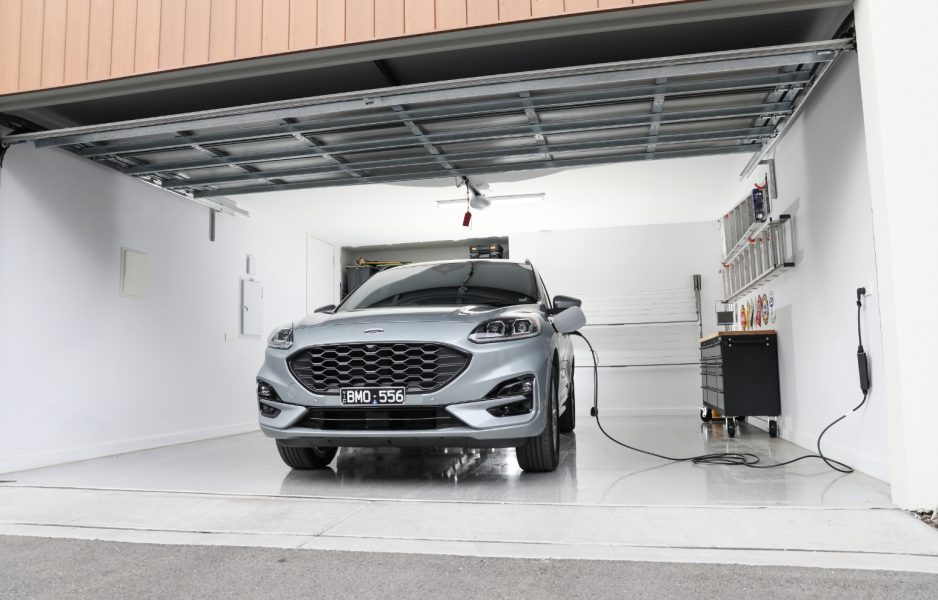
The Ford Escape PHEV is the blue oval’s first foray into electrified vehicles in Australia. Costing from $54,940 (plus on-roads), it has a 112kW 2.5-litre four-cylinder with a 69kW electric motor and a 14.4kWh battery pack that can deliver up to 50km of zero emission driving range.
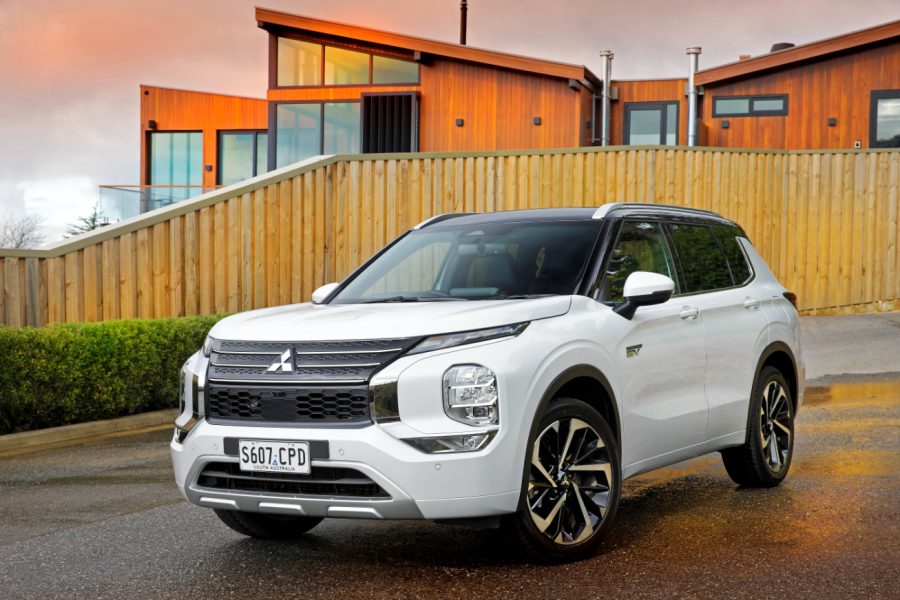
Mitsubishi jumped on the plug-in bandwagon earlier than its rivals with the original Outlander PHEV that first launched in 2014. Last year, the Japanese brand introduced the second-generation model with a full model range that starts at $55,490 (plus on-roads) for the entry-level ES and tops out at $69,990 (plus on-roads) for the flagship Exceed Tourer.
All models use the same 2.4-litre petrol engine with two electric motors and a 20kW battery pack that can drive an impressive 83km on the electric motors only.

Coming soon is the Mazda CX-60, a mid-sized SUV that introduces a new level of premium design and quality – and the first plug-in hybrid option – for the Japanese brand. Only two plug-in hybrid models fall under the LCT threshold, the entry-level Evolve ($72,300 plus on-roads) and the mid-level GT ($80,300 plus on-roads).
Both feature a 2.5-litre petrol four-cylinder engine with a 100kW electric motor and a 17.8kWh battery with a zero-emission driving range of 76km.
Large SUV
While there are plenty of electric and plug-in hybrid options to choose from in the large SUV segment, the majority are premium models from established luxury brands and exceed the LCT threshold.
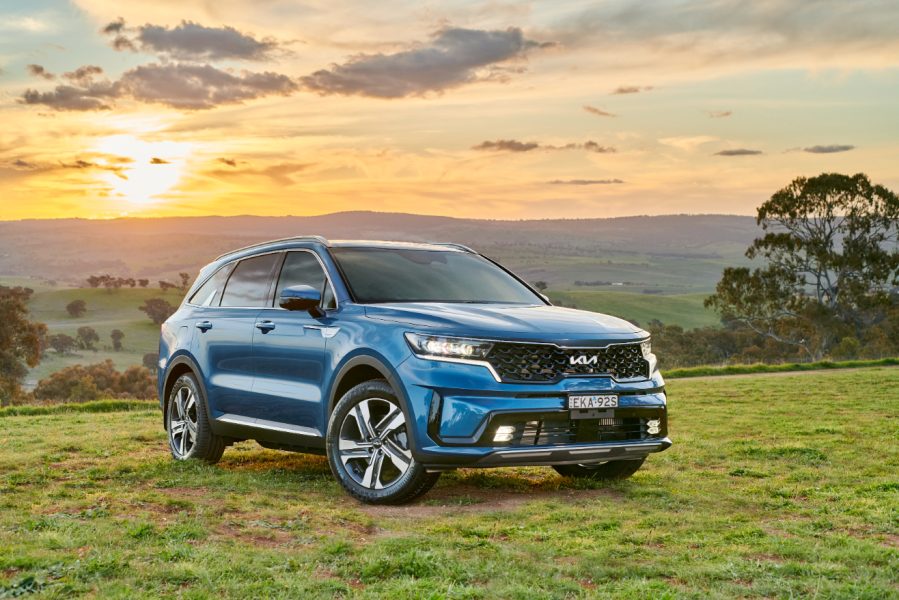
But there are two options that are applicable to the FBT exemption, both of which come from South Korean brand Kia: the company’s popular Sorento seven-seater in plug-hybrid form and the striking new, award-winning EV6 electric vehicle.
The Sorento PHEV, which costs from $81,080 and is only available in one high-grade specification, pairs a 1.6-litre turbo four-cylinder engine with a 67kW electric motor and 38kWh battery pack that can deliver 68km of zero emission driving range.
With the EV6, only two of the four variants – both in single-motor, rear-wheel drive configuration – fall under the LCT threshold: the entry-level Air RWD ($72,590 plus on-roads) and GT-Line RWD ($79,950 plus on-roads). Both have a 77.4kWh battery and a 168kW/350Nm motor and can travel up to 528km on a single charge.
Light Commercial Vehicles
Tradies and businesses that operate a fleet of delivery vehicles have only two options in the light commercial segment now.
Both the Renault Kangoo E-Tech and upcoming Peugeot e-Partner, which is due to arrive in local showrooms later this year, are small, fully electric delivery vans. The former has a 45kWh battery that can provide up to 285km of driving range and a total payload of 764kg. The latter has a 50kWh battery yet has just 245km of driving range but a higher payload of 843kg.
So, there you go… the cars on-sale in Australia today that can potentially save you thousands of dollars thanks to the federal government’s Electric Vehicle Discount bill and the exemption of FBT for leased vehicles. And that’s without taking into consideration any of the state government rebate programs that offer further incentives.
With more electric vehicles on the horizon, there will be plenty more options to choose from in the future.
See how much you can save with an SG Fleet electric novated lease here.
For more information on switching your business to electrified motoring, contact SG Fleet today.
 Driving Insights
Driving Insights

